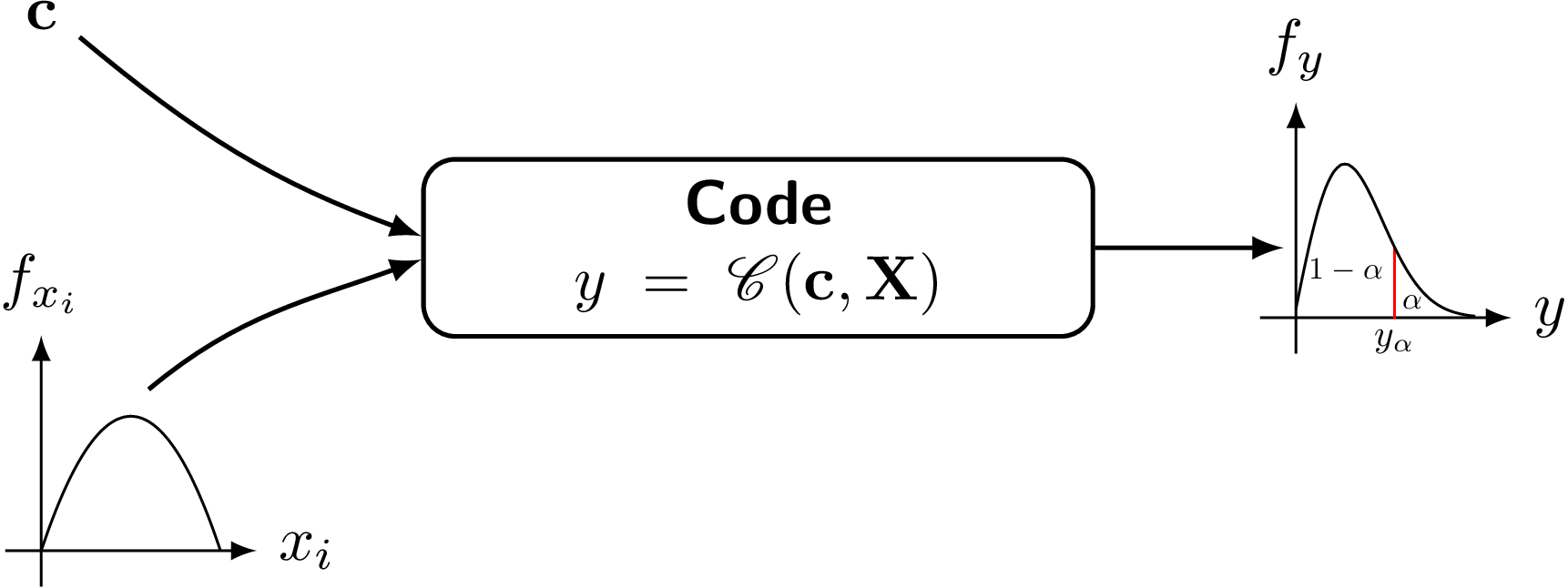Documentation
/ Manuel utilisateur en C++
: 
Abstract
This is a description of the Sampler module whose main goal is to produce a design-of-experiments, starting from the description of
the model provided by the user, and that would be used to investigate the sensitivity and/or propagate uncertainty
for the requested analysis.
The source files are in souRCE.git/meTIER/sampler/souRCE and the corresponding namespace is URANIE::Sampler.
Table of Contents
The Sampler module is used to produce design-of-experiments knowing the expected behaviour of the input variables for the problem under consideration. The framework of our approach can be illustrated in the following schematic view:
We will denote as
 the studied computational code which, generally, has two types of inputs:
the studied computational code which, generally, has two types of inputs:
The constant parameters which are gathered in the vector
 . They
represent constants.
. They
represent constants.
The uncertain parameters which are gathered in the vector

It shall be noticed that these parameters are supposed to be uncertain either because of a lack of knowledge on their actual value or because of their intrinsic random nature.
The result of the code
 for a given set of parameters
for a given set of parameters  gives the vector
gives the vector  which contains all the output variables of the analysis.
which contains all the output variables of the analysis.
Different methods exist to obtain a design-of-experiments from uncertain parameters which can be classified into two categories:
stochastic methods (see Section III.2). These methods consist in using a random number generator to produce new samples. This is also called Monte-Carlo.
deterministic methods (see Section III.4). Two distinct calls with the same parameters will always give the same point in a design-of-experiments. Some of these methods (those discussed below) are sequences which are sometimes called quasi-Monte Carlo (qMC).






